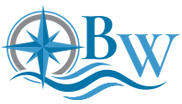Putting Your Home To Work

By the time retirement comes along, most people have a sizable share of equity in the home. There are several ways to capitalize on that asset you live in.
Pay Off Mortgage
If your home isn’t free and clear and your mortgage balance isn’t too big, consider paying it off. You’d need to use assets from your bank or taxable account, not IRA or 401(k) assets. This can reduce your ongoing expenses significantly. Lower expenses means you don’t need to withdraw as much from your portfolio. Besides reducing stress on the portfolio, you could also pay less in taxes (since you’ll be taking less withdrawals from your accounts) and you might even be able to move to a more conservative portfolio.
Establish a Home Equity Line of Credit
You only pay for what you need, so setting up a home equity line of credit is an easy tool to give yourself flexibility in retirement. It can be used as an emergency reserve. This could allow you to keep less in cash and put more of your money to work in a higher yielding investment. If your cash flow and expenses are not that smooth, you could use a home equity line to help out in months you end up short and repay it when you have more income. This could help prevent you from taking out larger withdrawals from the portfolio. You could also use the home equity line of credit as a financing vehicle to pay for larger items like a new car or a once-in-a-lifetime vacation, especially if you can’t find suitable rates. Then you could set up a payment plan to pay it off over time just like a regular loan. Just be careful you don’t get carried away. HELOCs have variable interest rates and they could increase.
Refinance Your Mortgage
Most people have already refinanced to take advantage of the historical low interest rates. However, if a person can’t pay off the mortgage by retirement, they may want to consider refinancing and starting the 30 years again. If they only had 15-20 years left on the mortgage and a similar interest rate, refinancing could really reduce their current expenses.
A more aggressive approach would be to not only refinance, but to pull money out. This is money that you could use as part of your retirement spending plan or add to your portfolio. Adding to your spending plan / cash reserve means it would be longer before you needed to touch the portfolio, therefore allowing it to grow more. The cash-out refinance is often paired with a more aggressive portfolio. The thinking is something like “I’ll make low rates work for me. I’ll borrow at a low cost and invest in assets that will grow more over time. I’m not risk averse, so I can handle some volatility. I’m in it for the long-term.” It’s not for everybody. After all, a larger mortgage means more expenses and higher withdrawals from the portfolio.
Either way, you will want to make sure you’re staying in the home long enough to reap the rewards. If you refinance and then sell 1-1.5 years later, you probably lost money.
Use As A Bequest
Some people aim to have a set amount to give to their family or charity at the end of their lives. They are reluctant to spend down their portfolio principal and may sacrifice their standard of living in order to meet this goal. Often, they don’t consider the equity in their homes as part of the bequest. However, home equity could be a sizable asset and it should be included as part of the target bequest. This could mean a more enjoyable life in their later years as they wouldn’t need to be as frugal with their investment portfolio.
Downsize
If your empty nest is too large, you’re tired of the maintenance, you want a change of scenery, or you just want to free up some cash, downsizing to a smaller home or condo may be just the trick. And don’t think you need to buy right away. It’s often advisable to live in an area first before purchasing permanent quarters, especially when moving to a new city.
Reduced expenses and/or an addition to the portfolio can go a long way towards successfully meeting your retirement goals. Downsizing can also have non-monetary perks like more free time, a feeling of a fresh start, and mental stimulation as you learn your new surroundings and meet new friends.
A more aggressive approach would be to rent out your home for 1-2 years and then sell it. If the net rental income would be greater than the cost of your new home, you think real estate will appreciate even a little over that time, and you don’t mind the hassle, then renting could be an option. This is a short-term strategy though, because you don’t want to lose your capital gains exclusion on the house. In order to qualify for the exclusion ($250,000 for single and $500,000 for joint), you must have owned and used your home as your primary residence for at least 2 out of the 5 years prior to the date of sale.
House Swap
For the adventurous, you could consider a home swap in which travelers stay in your house and you either stay in their house or someone else’s for a set amount of time. This can drastically reduce vacation costs. There are several exchanges where you can list your home, view other members’ homes and request references of potential swappers.
Reverse Mortgage
Reverse mortgages allow you to stay in your home, transform equity into income, and not worry about paying it back. You must be 62 or older to get a reverse mortgage. Here are some of the benefits:
- You can stay in your home
- Whatever you borrow (and interest) reduces the equity in your home, but you are not required to make any loan payments unless you move
- If you move or pass away, you only need to repay what your owe
- You will never owe more than the value of your home
- The money you borrow is tax-free, and it won’t increase your Medicare premiums or affect the tax status of your social security benefits
- Choose between a lump sum, a line of credit, or monthly payments (for life or a set time)
Some people may set up a home equity line of credit just as an emergency source of funds and never touch it. However, when people set up a reverse mortgage, the intention is to use the funds to improve their financial situation. Funds first go to pay off an existing mortgage, but then they can be used to pay off other debt (lower expenses), to meet living expenses (increase income), or to assist with aging like modifying your home or buying needed medical equipment (improve standard of living).
The amount you can borrow depends on the value of your home, interest rates, and your age. Costs associated with reverse mortgages have come down in recent years, but it is still relatively expensive to set one up. Estimated fees on a $300,000 home would be about 3%, or $9,000. But don’t assume $291,000 is then available to use. Even if the house is free and clear, you still might only have available a lump sum of $150,000, a line of credit up to $140,000, or lifetime payments of $10,250/year.
If you love your home and it will suit your needs as you age, a reverse mortgage may be a decent option. However, if you don’t plan on staying in your home, you should consider downsizing first, and find a home that’s better suited to your needs.

